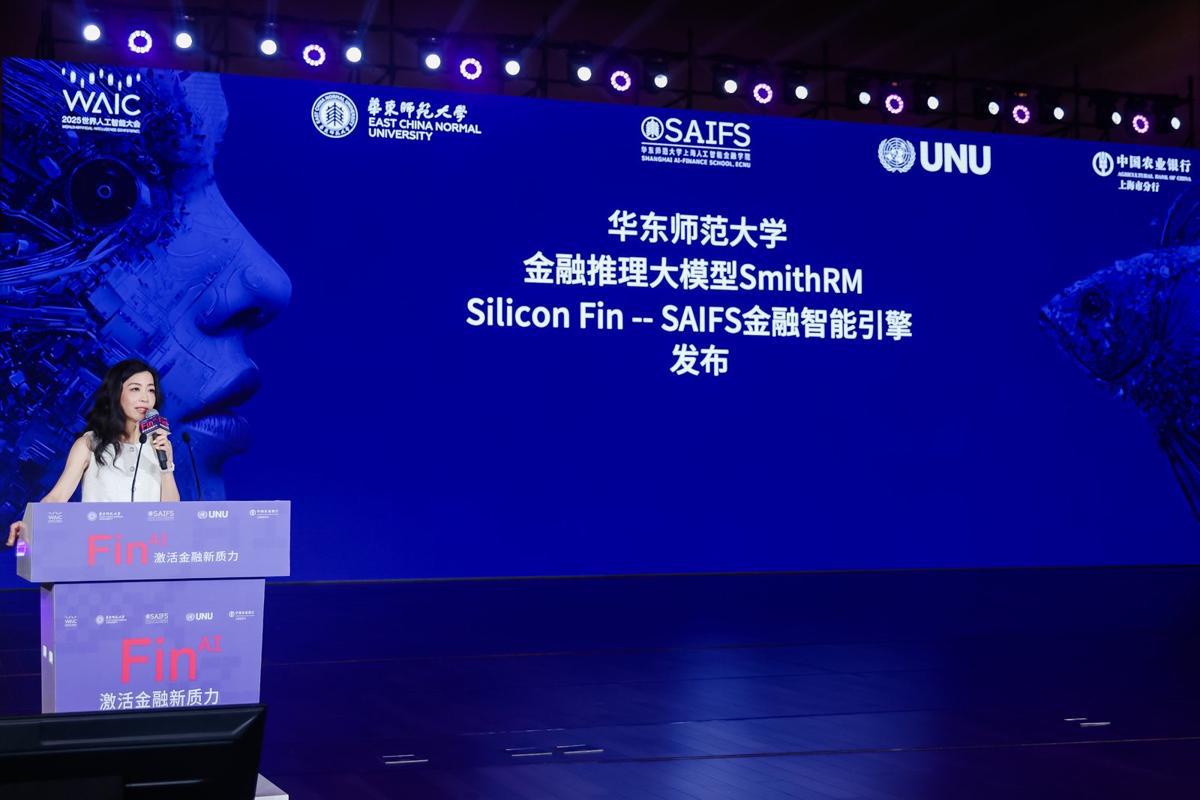
The Shanghai Artificial Intelligence Finance Institute (SAIF) at East China Normal University launched a new-generation Smith RM financial reasoning model on Sunday, addressing the hallucination problem in financial credit analysis.
The new model, which was released during the 2025 World Artificial Intelligence Conference held in Shanghai from July 26 to 28, can generate a 12,000-word credit report in 30 seconds, with a hallucination rate controlled below 0.3 percent, down 97 percent from the previous model.
Zhou Jun, deputy president of Agricultural Bank of China's Shanghai branch, said they have trialed the new model at the bank over the past three months, assisting in the approval of 4.7 billion yuan ($660 million) of technology innovation loans. The average approval time has been significantly reduced from 5.7 working days to 11 minutes.
According to SAIF's dean Shao Yilei, credit hallucination has always been a challenge in the industry, as models may fabricate data or exaggerate risks in order to rationalize themselves. The newly introduced model reduces the hallucination rate of large language models through verifying macro factors, analyzing financial reports in a reverse manner, and tracing public opinion semantic, she said.
Tim Huang, managing director and head of global corporate banking for JP Morgan Chase Greater China, said that fintech companies usually serve clients that are not covered by banks. The application of blockchain in cross-border payment and settlement, for example, is driven by fintech companies. As a result, banks should take the initiative to embrace technologies, not only for development but to also avoid being eliminated by competition, he explained.
However, Zhang Weizhong, chairman of Shanghai Pudong Development Bank, believes that the current technical barriers are not that great. The key lies in effectively applying AI technology to specific scenarios, such as rapidly generating research and credit reports to improve accuracy and efficiency. Meanwhile, AI can also help employees enhance their capabilities and accelerate industry applications.
However, this process is not only a technical issue but rather involves the implementation of strategic thinking, requiring a reset of management processes and improvements in efficiency. Financial institutions need to make strategic adjustments to better adapt to AI technology, he said.

